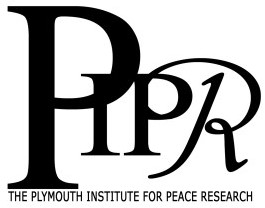Origins of the ‘Climate Change’ Threat to National Security – and the Geoengineering Response
By Ian Baldwin
15 June 2017
Parts five and six of Ian Baldwin’s articles on geoengineering, originally published in the Vermont Independent, here https://www.vermontindependent.org/is-global-warming-good-or-bad-that-depends-on-whom-you-ask-our-geoengineering-age-part-5/ and https://www.vermontindependent.org/origins-of-the-climate-change-threat-to-national-security-and-the-geoengineering-response-our-geoengineering-age-part-6/

Contrails or chemtrails?
Over three decades, a consensus has grown that global warming is bad for the planet. Scientific and political elites, including environmental activists, have further achieved a “consensus” that this change in the world’s weather systems and climate is mainly caused by our globalized Western civilization’s emissions of one, long-lasting greenhouse gas — CO2. And the primary source of this gas is anthropogenic, that is, caused by humanity, specifically by our insatiable habit of burning fossil fuels.
The burning of these fuels is closely correlated with both economic and population growth.[1] And, in our minds, with prosperity.
To gain some perspective, the world has 7.4 billion human beings and is adding roughly 80,000,000 new souls each year — all of who aspire to a Western way of life. This way of life is pervasively dependent on fossil fuels: for electricity and light; for agriculture and food; for access to clean water; for sewage treatment and waste disposal; for transportation, including international tourism and other commerce, as well as road repair and building; for manufactures (plastics of all descriptions); for pharmaceutical drugs and medical care; and by no means least, for war. No segment of the global economy is more energy-intensive than the world’s militaries. Without fossil fuels in plentiful supply they will wither. And they know it.
So we must ask ourselves, if global warming is the single most significant, existentially challenging, global environmental problem of our age, why has so little been accomplished in halting its perceived source, CO2? Thirty years is a long time in a world of rapid “progress.” How do we understand the divide that yawns between our rhetoric and our actions over the course of the quarter century since the Rio Earth Summit when the world community formally recognized increased CO2 emissions posed a serious threat to humanity?…Or how do we make sense of a later world community “commitment,” made at Tokyo in 1999, to reduce CO2 emissions that exempted the world’s largest single polluter, the Pentagon?[2]
According to the US Energy Information Agency, world energy demand will rise steeply between 2012 and 2040 and fossil fuels will comprise 78 percent of that demand as late as 2040 despite the robust growth of renewables and nuclear. Thus human output of CO2 will continue to grow, and baring a catastrophic event is expected to do so for decades.[3]
Capitalism cannot exist without growth. And economic growth radically depends on energy growth. Such growth is a universal imperative, one all the world’s political elites well understand, as their survival depends on it. Economic growth is planned for in virtually every nation on Earth. And most notably in the world’s two most populous nations, China and India, which hold over 36% of the entire human population. Real GDP growth is planned to be in the neighborhood of slightly less than 6 to more than 7 percent over the next several years in China and India.[4] A rate of growth of 6 to 7 percent means two of the world’s largest economies will double in a little over one decade.
Where will the resources necessary for this fantastic growth come from? One location is the Arctic. One fifth of Russia’s territory lies north of the Arctic Circle and includes an Arctic frontier coastline thousands of miles long. More than an estimated one fifth of the world’s oil and gas reserves lie north of the Arctic Circle, more than half of them in Russia.[5] In the words of a senior Shell Oil Company executive, the Arctic holds “by far the largest unexplored and undeveloped liquids resource on Earth.”[6] Many other important mineral reserves such as nickel, palladium, copper, gold, uranium, phosphate rock, tungsten, iron, tin, rare metals, and diamonds, among others, lie buried in Arctic. Further, no resource is likely to be more important to the future of humanity than fresh water: Arctic and sub-Arctic Russia holds some of the world’s most plentiful reserves of this precious resource. As do Greenland and Antarctica.
In the 1950s and early 1960s climate-change-geoengineering proposals in both the US and Soviet Union were oriented toward causing global warming for the benefit of human activity, with the melting of the Arctic then the glittering jewel on the geoengineer’s horizon, and a prospect devoutly hoped for by Soviet geoengineers and planners.[7] “Russian opinion has long favored an open Arctic Ocean, and some scientists…believe that the beneficial effects of global warming might ‘pep up’ cold regions…making the country wealthier,” according to historian James R Fleming.[8]
In post-Cold-War Russia, this long-standing hope for an ice-free Arctic has grown stronger. In the Arctic-Circle year-round deepwater port of Arkhangelsk, hundreds of miles due north of Moscow on Russia’s White Sea, Vladimir Putin recently told CNBC during the 4th International Arctic Forum that “Climate change brings in more favorable conditions and improves the economic potential of this region.” Putin added, “Today, Russia’s GDP is the result of the economic activity of this region.”[9]
Russia has invested heavily in its vast Arctic zone. It has by far the world’s largest icebreaker fleet — over 40 ships with 11 in production, and six nuclear-powered — as well as six military bases, 13 airbases, and 16 deepwater ports. And 10 new search-and-rescue stations.[10] Russia requires such an infrastructure to keep the shipping lanes of its 3,500 mile-long Northeast Passage open and guarantee laden ships safe passage to Asia and Europe. Unlike other Arctic nations’ continental shelves, Russia’s “is wide and shallow…less than 200 metres deep, even far from the coast.”[11] This makes its offshore oil and gas deposits more readily exploitable than elsewhere in the Arctic. Russia has recently set up Artic conditions-capable drilling platform manufacturing centers in Murmansk and Vladivostok so it can develop its offshore resources unhindered by sanctions.[12]
Russia is not alone making these investments in the Arctic. China, “taking the long view,” is now “building ships, icebreakers, and ports to capitalize on the future,” when the Northeast Passage will be ice-free and save seaborne enterprise billions of dollars and 40 percent shipping time hauling goods between Asia and Europe. “As the climate becomes warmer and polar ice melts faster, the Northeast Passage has appeared as a new trunk route connecting Asia and Europe,” according to a top executive at China’s huge Ocean Shipping Company.[13]
Five hundred years of colonial European and American domination of world trade through maritime routes and navies will give way inexorably not only to Russia’s determination to make its Northeast Passage commercially viable year round but to China’s determination to reestablish its millennia-old Silk Road, reborn as what China calls OBOR — the One Belt, One-Road — a high-speed rail-and-highway system that will revolutionize world trade in the 2020s.
According to William Engdahl, a writer on geopolitics, “OBOR…will be a multi-trillion dollar development,” that will revivify the vital importance of what “Sir Halford Mackinder, the father of British geopolitics, called the Heartland” or “World-Island.”[14] Mackinder famously maintained that whoever controlled the ‘World-Island’ controlled the ‘World’, an insight, or precept, that for decades has preoccupied such US policy luminaries as Zbigniew Brzezinski and Henry Kissinger in their concern for US geopolitical supremacy.[15] China is investing in both the ocean transport infrastructure supporting Russia’s Northeast Passage (which will be ice-free well ahead of Canada’s Northwest Passage) and in building a high speed land bridge that will connect Asia with Europe in record time. With a long-term goal of connecting two of the world’s three largest markets from east to west, from the Pacific to the Atlantic oceans, “China commenced its ‘Go-West’ policy” in 2000. The first step was “to link-in and develop…[its] left-behind inland regions,” building “over 19,000 kilometers of new high-speed rail lines, 60,000 kilometers of new expressways, and over 100 new airports” as well as “a good portion of the most economically dynamic cities in the world today.”[16] Since 2013 China’s “Go-West” policy has been focused on extending its OBOR transport network from western China to western Asia — and Europe.
And the funds for OBOR are there, along with the ambition to get it done. According to Forbes magazine contributor Wade Shepard, “China is projected to triple its global assets to $20 trillion by 2020.” He adds, “the integration of Eurasia is one of the main story lines playing out in the first half of the 21st century. [17] Many nations are now lining up to participate in developing the riches in Russia’s frozen outback and in the more southerly Central Asian nations’ fossil fuel and other mineral resources. Although Russia “initially viewed China’s involvement in Central Asia as an intrusion into its backyard,” the US-led 2014 sanctions against it have driven it East and “[j]oint economic projects between China and Russia have been on the rise ever since.”[18] China, Russia, Kazakhstan and other central Asian nations are now all involved in building the planet’s largest land transport system, one of the greatest engineering and construction projects in all of human history, connecting Beijing and other Chinese cities to Hamburg and other European cities, as far distant from each other as Lisbon and Shanghai. Or, from Vladivostok to Murmansk — 6,437 road miles. (For comparison, New York to Los Angeles is 2,791 road miles, less than half the distance between Vladivostok and Murmansk.)
The immense investments in the development of Eurasia are founded, at least in part, on an understanding that global warming is both unstoppable and economically favorable to the region’s future. As Vladimir Putin recently claimed, “global warming will continue anyway, anyhow,” regardless what humanity does to attempt to thwart it. According to Putin, the issue “isn’t about preventing global warming. I agree with those people who believe it is impossible [to stop]. It may be related to some global [geophysical] cycles or some greater outer space [e.g., solar] cycles. It’s about how to adjust ourselves to it.”[19]
It is not hard to imagine that the leaders of such people-dense countries as China and India, or for that matter, most the Western European countries, on the one hand, and such comparatively people-empty countries as Russia, Mongolia, and Kazakhstan, on the other, are eager to develop the resources required to guarantee the material welfare of their peoples. Not hard to imagine that they are, in fact, driven to do so. By 2030 “Asia will host 64% of the global middle class,” thanks to the growth of its largest economies, while “European and American middle classes will shrink from 50 percent of the total to just 22 percent.”[20] Meantime, in the West the original or early orientation of state security planners and geoscientists to thinking about the benefits of global warming has been quietly maintained for decades, despite an ever-growing consensus about its dangers, and has been funded by the big energy companies who have been wedged inside the great climate change debate since its inception.[21] In a March 25, 2012 letter to The Economist Matt Andersson, an aerospace executive and intelligence industry consultant, bluntly stated: “The public and press are largely uninformed (and misled) as to the actual Geo-engineering operations being conducted by military and certain cooperating commercial interests to effectively ‘melt’ the arctic for naval navigation and resource extraction.”[22]
Is the otherwise perplexing discord between NATO and Russia really about access and control of natural resources — viewed through a narrow national-interest zero-sum-game lens? A US Space Command document, Vision for 2020, asserts: “Space power…will be increasingly leveraged to close the ever-widening gap between diminishing resources and increasing military commitments.”[23] By “commitments” one assumes the US Space Command refers to the US/NATO ring of bases that stretch from Norway, the Baltic states, Poland, Rumania, Bulgaria, and Greece on “the Heartland’s” western border and Georgia, Turkey, Iraq, Kuwait, Saudi Arabia, the rest of the Arab Persian Gulf states, Pakistan, and Afghanistan on its southern border to Thailand, Cambodia, Singapore, the Philippines, Japan, and South Korea in the East to somehow “guarantee” — in an unspoken expansion of the Carter Doctrine — access to those strategic resources, above all energy resources essential to the military’s survival, first and foremost.[24]
The world’s fossil fuel industry recognizes that fossil fuels are likely to continue to supply at least 70 percent of humanity’s energy needs up to as late as 2040, despite the recent exponential growth of renewables. Such recognition is especially acute inside the world’s largest consumer of fossil fuels, the Pentagon, and by extension inside the militaries of the world’s great and emergent powers. Without oil to fuel their ships, tanks, planes, missiles, and satellite-launchers, the world’s militaries will radically shrink into paltry images of their former selves.
“It’s no coincidence that our strategic interest in the Arctic warms with the climate,” a US Admiral said during a NATO workshop on security in the Arctic.[25] In 2015 the US Navy, which has been planning for ice-free Arctic operations since 2001, launched the largest war game exercises in Alaskan Arctic waters in over 30 years of conducting them, a new five year program of war readiness called Northern Edge. By the Navy’s own admission, these exercises “may result in damage [that] could take years to decades from which to recover, but as journalist Dahr Jamail reports, “they are preparing for what’s coming in the Arctic as the race for what’s left” of the world’s oil and gas.[26]
It seems not wholly unlikely that the reasons for a lack of progress on global CO2 emissions are not merely confined to woeful human habit and institutional inertia or to the trillions of dollars already invested in the not-to-be-stranded, not-yet-fully-amortized assets of the world’s oil, gas, transportation, tourist, agricultural, chemical, and pharmaceutical industries. But even more fundamentally, the fate of industrial civilization depends on its ongoing access to the resources it needs to continue to grow and “prosper.”[27]
Some find the prospects exhilarating. Some, grievous. It all depends on whom you ask.
Official US governmental recognition of climate change as a matter of national security is at least 45 years old. It is, moreover, a recognition split along two governmental axes: one military, the other civilian. Military recognition publically originated in response to the efforts of Soviet Union geoengineers, who were intrigued by the possibilities of hastening the warming of the Arctic. In 1972 a Department of Defense (DoD) official testified in the Senate that the Soviet Union had developed “a well-organized and extensive program in climate research…[and] that active modification of climate is an objective of this research.” Notably, the official added, “climactic changes are clearly potentially grave threats to national security, and have consequent implications for military planning [emphasis added].” [28]
On the civilian front, in 1965 Al Gore’s Harvard mentor, Roger Revelle, chaired a subcommittee on atmospheric CO2 whose findings were part of a broader governmental report titled Restoring the Quality of Our Environment. It warned: “By the year 2000 there will be about 25 percent more carbon dioxide in the atmosphere than at present” due the burning of fossil fuels. Revelle’s subcommittee “also explored the possibilities of deliberately bringing about ‘countervailing climatic changes’” — an early nod to official civilian interest in the subject of climate engineering. [29]
A year later, in 1966, a senior administrator at NASA wrote a report for the Department of Commerce titled “A Recommended National Program in Weather Modification.” The report recommended the National Science Foundation (NSF) assume administration of a range of civilian governmental research programs on weather modification: among the topics were cloud dynamics, cloud ice nucleation, formation of particles in clouds (“coalescence”), cloud electrification, and computer analysis “to permit more accurate mathematical modeling “ of atmospheric phenomena. [30]
It would appear the civilian sector wanted to catch up with the military, which had a 20-year head start.
The first US climate-modeling program was formed in the Pentagon’s Defense Advanced Research Projects Agency or DARPA, not in one of NSF’s university research centers. In the early 1970s DARPA employed a “ganged” ILLIAC IV computer system, “which alone could handle the mass of data and subtle changes that make weather prediction so difficult.” The initial work was secret, done under the rubric of “Nile Blue,” but when the weather and other environmental modification weapons deployed in the Vietnam War were exposed to public view in the early 1970s, the project name was changed to “Climate Dynamics” and proclaimed unclassified to preserve its funding in a hostile political environment. [31]
Writing in 1976 Lowell Ponte, an arms control researcher, claimed DoD officials “admit that that Pentagon climate modeling has studied ways and means and probable results of melting the polar ice caps, and the possible consequences of Soviet schemes to melt the Arctic ice pack. They have also studied how to make and direct tornados and hurricanes, and how to destabilize weather in the Soviet Union, China, and Cuba, which would ruin their harvests and thereby strengthen the U.S. ‘food weapon’.” [32]
Some years earlier geoscientist Gordon J F MacDonald had warned that the presumed benign technology of weather control for agriculture could easily become malign, doubly so, because it “could damage an adversary without revealing its intent ” making such weather- modification technology an admirable clandestine weapon [emphasis added]. [33] MacDonald published a series of ideas for military use of environmental warfare, writing that, “The key to geophysical warfare is the identification of the environmental instabilities to which the addition of a small amount of energy would release vastly greater amounts of energy” [emphasis added]. [34]
Thus MacDonald, and presumably many other Pentagon scientists after him, believed that “Earthquakes would make good weapons…and so would the tidal waves that undersea earthquakes can produce….[and so can] lightning storms be directed against an enemy.” [35] MacDonald also “thought belligerents might cut a hole in the ozone layer over a target area to let in lethal doses of ultraviolet radiation”[36] using “lasers and chemical reagents.”[37] Ponte asserted that DARPA had studied all these phenomena by the mid-1970s. Two decades later, in 1997, Secretary of Defense William Cohen could corroborate such climatic geoengineering capabilities were “real” and that therefore DoD had “to intensify our efforts” to counter them [38] — a reprise of DoD’s 1972 Senate testimony.
In 1978 the Senate Committee on Commerce, Science, and Transportation issued a lengthy report entitled “Weather Modification: Programs, Problems, Policy, and Potential.” It reviewed the three-decades-long history of both US and worldwide weather modification programs, the history of CO2 emissions, and “the implications of a climatic warming,” and urged a “program for accelerating national progress in the modification of the weather” as well as intensive modification research. [39]
The Senate’s Weather Modification report also commented on the UN’s then recent Environmental Modification Convention (ENMOD), citing criticisms of the amendment to the original treaty document (believed to have been made by the US) that “only partially bans environmental modification techniques in warfare.” Quoting the offending changes in the relevant sentence (indicated by italics), it reads: “Each State Party to this convention undertakes not to engage in military or any other hostile use of environmental modification techniques having widespread, long-lasting, or severe effects as the means of destruction, damage or injury to another State Party.” The report then added, “the Convention was [also] criticized for its lack of effective enforcement procedures,” a widespread perception. [40] ENMOD, according to James R Fleming, “does not prohibit ‘the use of environmental modification techniques for peaceful purposes’.” [41] Is altering the climate to spare humanity the worst effects of global warming “peaceful”? Probably that will depend on whom you ask. If you ask Fleming, he has already answered: “…all climate-engineering schemes involve deliberate manipulation of the dynamics, composition, or structure of the Earth, and all such schemes carry the potential for ‘widespread, long-lasting, and severe’ harm on national, regional, and possibly global scales.” [42]
In the wake of its international publicity ENMOD had the effect of causing the Pentagon to publically disown its 30-year investment in weather modification, effectively driving that work underground, where it naturally subsists, leaving civilian agencies and authorities to pursue modification technology more or less in the open, thus diverting the public’s wandering attention from the military’s ongoing covert climate modification research. By the late 1970s, a scientific consensus had already begun to form around the need to counteract the buildup of anthropogenic CO2. In the 1980s new geoengineering proposals were being made in science journals to bring about, for example, “desired changes in Earth albedo [reflectivity] through judicious introduction of small particles [that] can probably be accomplished at acceptable cost through the use of modified combustors on high-flying aircraft.” [43] Such geoengineering proposals generated a host of new technology patents, in particular for aerosol spray techniques as well as specifications for aerosol particles suitable for geoengineering sprays. These patents proliferated during the 1980s, unclassified patents open to public scrutiny. [44] We do not know about other, classified military geoengineering patents.
On June 23, 1988, NASA climate scientist James Hansen testified before Congress to warn NASA was “99 percent certain the warming trend was not a natural variation but was caused by a buildup of carbon dioxide and other artificial gases in the atmosphere,” and that it was “’time to stop waffling’” and face the facts of human-caused global warming. Hansen and other testifying scientists pleaded that “planning must begin now for a sharp reduction in the burning of coal, oil and other fossil fuels that release carbon dioxide.” [45]
In that same year, 1988, according to the physicist and science historian Spencer Weart, “the International Panel on Global Climate Change (IPCC) was designed by the Reagan administration, primarily as a replacement for the self-appointed committees of scientists…the administration thought were unduly alarmist. The IPCC was designed so that it can make a statement only by the unanimous consent of all the scientific representatives of all the world’s governments….a recipe for conservatism, if not paralysis.” [46] In hindsight it would appear the omniscient hands of the fossil fuels industry and its martial cohort were at work at the very outset of the great climate debate.
Not long after Hansen’s Congressional testimony and the formation of the IPCC, two former Lawrence Livermore chemists working for Hughes Aircraft Company filed a geoengineering patent, “Stratospheric Welsbach Seeding for the Reduction of Global Warming.” The 1991 patent — now owned by Raytheon, one of the world’s premiere weapons and weather information companies — is of particular interest because it called for “dispersing tiny particles of a material within the [greenhouse] gases’ layer, the particle material characterized by wavelength-dependent emissivity or reflectivity.” [47] In other words the mix of particles sprayed into the stratospheric greenhouse layer would behave exactly opposite to the greenhouse gases, both reflecting incoming sunlight back into space during the day and permitting Earth’s radiated heat to escape back into space at night. The patent specifies Welsbach materials, as well as “Welsbach-like materials” such as “the oxides of metals which have high emissivity” (aluminum oxide and thorium are notably cited) and which “may be seeded by dispersal from seeding aircraft…at an altitude on the order of 10 kilometers,” that is, in the stratosphere where the greenhouse gases themselves are primarily located. [48]
At about the same time the famous Welsbach patent was filed, the National Academy of Science (NAS) published its signal study Policy Implications of Greenhouse Warming, which stated that “Despite the great uncertainties, greenhouse warming is a potential threat sufficient to justify action now” and that research should be undertaken to learn more about “the potential of geoengineering options to offset global warming and their possible side effects.” [49] A year later the NAS’s accompanying 944-page technical volume was published in which the longest section — ‘Screening out Some Sunlight’— of a long chapter on ‘Geoengineering’ described mitigating strategies such as ‘space mirrors’, ‘space dust’, ‘multiple balloon screen,’ and in the most detail, ‘stratospheric dust’. “A screen could be created in the stratosphere by adding more dust to the natural stratospheric dust to increase its net reflection of sunlight.” [50] Under the subheading ‘Aircraft exhaust’ the geoengineering chapter noted that aircraft-sprayed dust might affect or otherwise damage ozone in the lower stratosphere, “but not in the troposphere” where little to no appreciate ozone exists. [51] As we shall later learn, it is in the troposphere, the lower atmosphere, where our weather and the air we breathe occurs, and where most of the geoengineering spraying is being observed and documented.
Some observers believe the NAS global warming policy and mitigation study effectively launched a new wave of climate engineering experiments [52]. A new military geoengineering research agenda, perhaps aimed at the growing climate change threat, is also suggested by how the US Air Force (USAF) Academy described its first-year chemistry course for undergraduates during the 1990-1991 academic year.
The word “Chemtrails” is gratuitously— innocently, in light of later events — displayed on the front of the text manual. During the 1990s a major science textbook publisher, Addison Wesley, published the USAF Academy’s spiral-bound second-year Chemistry 141 and 142 textbook in several revised editions through 2003, using the word “Chemtrails” to signal the book’s contents [53].
And then, as if on cue, in June 1991 Earth conducted a geoengineering experiment of her own, as Earth is wont to do every decade or so, one that would later be described as a prime example of “stratospheric aerosol geoengineering” or what the geoengineers now refer to as “the Pinatubo Option.” [54] According to the US Geological Survey, the Philippine island of Luzon’s Mt. Pinatubo ejected 20 million tons of sulfur dioxide into the stratosphere, more than 1 cubic mile of material that rose in an ash cloud 22 miles into the air and caused global temperatures to drop from 1991 to 1993 by about 1° F (0.5° C). [55]
Geoengineers ever since have looked to the 1991 Pinatubo explosion as their inspirational lodestar, incontrovertible proof that stratospheric aerosols can cool the planet abruptly. But only for one or two years, or as long as the ejected aerosols stay aloft. Otherwise a Pinatubo size volcano would have to erupt every other year — or planes spray more or less continuously.
In the meantime the Soviet empire had collapsed, presenting the world with a once-in-a century opportunity to “give peace a chance.”
NOTES
[1] Gail Tverberg, “The Long-Term Tie Between Energy Supply, Population, and the Economy,” Our Finite World, August 29, 2012. Accessed June 02, 2017.
[2] Gar Smith, “The Hidden Villain of Global Warming—The Pentagon,” Common Dreams, November 17, 2015. Accessed June 02, 2017. See also: Whitney Webb, “U.S. Military World’s Largest Polluter — Hundreds of Bases Gravely Contaminated,” Global Research, May 18, 2017. Accessed on June 02, 2017,
[3] US Energy Information Administration, International Energy Outlook 2016, May 11, 2016. Accessed March 28, 2017. And, Fiona Harvey, “CO2 Emissions Expected to Rise Significantly by 2030,” Climate Central, January 26, 2013. [4] PwC UK, The Long View: How will the global economic order change by 2050?, February 2017. Accessed on June 02, 2017.
[5] Lars Lindholt, “Arctic natural resources in a global perspective,” Ch 3 in Solveig Glomsrød and Iulie Aslaksen, Eds, The Economy of the North 2008 (Oslo: Statistics Norway, 2008). Accessed May 29, 2017.
[6] Terry Macalister and Damian Carrington, “Shell Determined to Start Arctic oil drilling this summer,” The Guardian, January 29, 2015. Accessed June 10, 2015.
[7] James Rodger Fleming, Fixing the Sky (New York: Columbia University Press, 2010), 198-200, 208, 256. See also: Spencer Weart, “Climate Modification Schemes,” The American Institute of Physics, June 2011. Accessed July 07, 2015.
[8] Fleming, Op. Cit., 256.
[9] Samantha Page, “Putin defends climate deniers and looks forward to the Arctic melting,”Think Progress, March 31, 2017. Accessed April 30, 2017.
[10] Steven Lee Myers, “U.S. Is Playing Catch-Up With Russia in Scramble for the Arctic,” The New York Times, August 29, 2015. Accessed on June 01, 2017. And, Terrell Jermaine Starr, “Russia’s Icebreakers Make It King of the Arctic And America Is Just a Pauper,” Foxtrotalpha, January 26, 2017. Accessed June 02, 2017. See also: ARCTIS, “Arctic Ports” (from AMSA Report 2009). Accessed June 01, 2017.
[11] Lars Lindholt, Op. Cit.
[12] Vladimir Kozlov, “Russia turns its eyes and wealth to the Arctic,” bne IntelliNews, March 27, 2017. Accessed April 30, 2017.
[13] Ed Struzik, “Shipping Plans Grow as Arctic Ice Fades,” Yale Environment 360, November 16, 2016. Accessed May 29, 2017.
[14] F William Engdahl, “Moscow and Beijing Begin Strategic Cooperation in Arctic,” Russia Insider, March 22, 2017. Accessed April 30, 2017.
[15] Zbigniew Brzezinski, The Grand Chessboard (New York: Basic Books, 1997). And, Henry Kissinger, Diplomacy (New York: Simon & Schuster, 1994).
[16] Wade Shepard, “Eurasia: The World’s Largest Market Emerges,” Forbes, October 21, 2016. Accessed May 25, 2017. See also: Geoff Wade, “China’s ‘One Belt, One Road’ Initiative,” Parliament of Australia, August 2016. Accessed May 25, 2017.
[17] Wade Shepard, Op. Cit.
[18] Ibid.
[19] Samantha Page, Op. Cit.
[20] David Rohde, “The Swelling Middle,” Reuters, Davos 2012. Accessed May 26, 2017.
[21] Francesca Grifo et al, “A Climate of Corporate Control: How Corporations Have Influenced the U.S. Dialogue on Climate Science and Policy,” Union of Concerned Scientists, May 2012. Accessed August 03, 2015.
[22] Matt Andersson, “Cosy Amid the Thaw,” The Economist, March 25, 2012. Accessed July 07, 2015.
[23] United States Space Command, Vision for 2020, undated. Accessed September 04, 2015.
[24] David Vine, Base Nation (New York: Metropolitan Books/Henry Holt, 2015). And, David Vine, “The U.S. Has an Empire of Bases in the Middle East — and It’s Not Making Anyone Safer,” Tom Dispatch, January 20, 2016. Accessed May 25, 2017.
[25] Michael T Klare, The Race for What’s Left (New York: Picador, 2012), 98.
[26] Dahr Jamail, interview by Amy Goodman and Aaron Maté, “Bombing the Arctic: US Navy War Games in Gulf of Alaska Threaten One of the World’s Most Pristine Areas,” Democracy Now!, June 16, 2015. Accessed June 29, 2015.
[27] Alice J Friedemann, When Trucks Stop Running (New York: Springer, 2016).
[28] Lowell Ponte, The Cooling (Englewood Cliffs, NJ: Prentice-Hall, 1976), 171.
[29] James Rodger Fleming, Fixing the Sky (New York: Columbia University Press, 2010), 238.
[30] Homer E Newell, “A Recommended National Program in Weather Modification,” International Committee for Atmospheric Sciences, November 1966. Accessed June 12, 2017.
[31] Ponte, Op. Cit., 170.
[32] Ibid., 170-172.
[33] Gordon J F MacDonald, “How to Wreck the Environment,” in Unless Peace Comes: AScientific Forecast of New Weapons, ed. Nigel Calder (New York: Viking, 1968), 188. Accessed on June 12, 2017.
[34] Ponte, Op. Cit., 167.
[35] Ibid. See also: Fleming, Op. Cit., 237.
[36] Fleming, Op. Cit., 237.
[37] Ponte, Op. Cit., 168.
[38] William S Cohen, “DoD News Briefing,” DoD, April 28, 1997. Accessed on June 07, 2017,
[39] Committee on Commerce, Science, and Transportation, “Weather Modification: Programs, Problems, Policy, and Potential,” United States Senate, May 1978. Accessed June 12, 1017.
[40] Ibid., 431, 432. See also: Fleming, Op. Cit., 183-188.
[41] Fleming, 184.
[42] Ibid., 186.
[43] S. S. Penner, A. M. Schneider and E. M. Kennedy, “Active Measures for Reducing the Global Climatic Impact of Escalating CO2 Concentrations,” Acta Astronautica 11, 6 (1984). Accessed May 8, 2015.
[44] Some of the public domain geoengineering patents can be found in Lorie Kramer, “A Partial History of Aerosol and Weather Related Technologies,” July 30, 2003, and in “Extensive list of Patents,” GeoEngineering Watch. Both accessed July 07, 2015.
[45] Philip Shabecoff, “Global Warming Has Begun, Expert Tells Senate,” The New York Times, June 24, 1988. Accessed June 12, 2017.
[46] Spencer Weart, “A National Security Issue? How People Tried to Frame Global Warming,” in Global Climate Change: National Security Implications, ed. Carolyn Pumphrey (Carlisle, PA: Strategic Studies Institute, US Army War College, 2008), 36. Accessed June 19, 2015.
[47] [1] David B Chang and I-Fu Shih “Stratospheric Welsbach seeding for reduction of global warming,” US Patent No. 5,003,186, March 26, 1991. Accessed May 6, 2015.
[48] Ibid.
[49] National Academy of Sciences, National Academy of Engineering, Institute of Medicine, Policy Implications of Greenhouse Warming (Washington, DC: National Academy Press, 1991), 72.
[50] National Academy of Sciences, National Academy of Engineering, Institute of Medicine, Policy Implications of Greenhouse Warming: Mitigation, Adaptation, and the Science Base (Washington, DC: National Academy Press, 1992), 449.
[51] Ibid., 453.
[52] Gabriel Stetter, “Der Zerstörung des Himmels,” Raum und Zeit, Jan/Feb 2004. Accessed July 07, 2015. Translated by Graham Rickett as “White Skies: The Global Warming Problem and Chemtrails.” Accessed July 07, 2015.
[53] Department of Chemistry, USAF Academy, Chemtrails: Chemistry 131 Manual, Fall 1990 and Department of Chemistry, USAF Academy, Chemtrails: Chemistry 141 and 142, Fourth Edition (Reading, MA: Addison Wesley, 1998), ISBN-13: 978-0201306842 and ISBN-10: 0201306840. The Chemistry 131 manual in my possession, Fall 1990 edition, has no listed ISBN.
[54] Eli Kintisch, Hack the Planet: Science’s Best Hope—or Worst Nightmare—for Averting Climate Catastrophe (Hoboken, NJ: John Wiley & Sons, 2010).
[55] Chris Newhall et al, “The Cataclysmic 1991 Eruption of Mount Pinatubo, Philippines,” U.S. Geological Survey, 1997. Accessed August 03, 2015.





